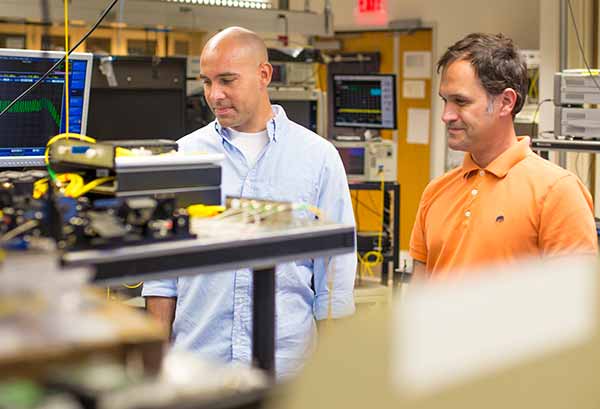Electrical Engineers Break Power and Distance Barriers for Fiber Optic Communication
date : 2017/10/21 9:17:53
Electrical engineers have broken key barriers that limit the distance information can travel in fiber optic cables and still be accurately deciphered by a receiver. Photonics researchers at the University of California, San Diego have increased the maximum power — and therefore distance — at which optical signals can be sent through optical fibers. This advance has the potential to increase the data transmission rates for the fiber optic cables that serve as the backbone of the internet, cable, wireless and landline networks. The research is published in the June 26 issue of the journal Science.
The new study presents a solution to a long-standing roadblock to increasing data transmission rates in optical fiber: beyond a threshold power level, additional power increases irreparably distort the information travelling in the fiber optic cable.
“Today’s fiber optic systems are a little like quicksand. With quicksand, the more you struggle, the faster you sink. With fiber optics, after a certain point, the more power you add to the signal, the more distortion you get, in effect preventing a longer reach. Our approach removes this power limit, which in turn extends how far signals can travel in optical fiber without needing a repeater,” said Nikola Alic, a research scientist from the Qualcomm Institute, the corresponding author on the Science paper and a principal of the experimental effort.
In lab experiments, the researchers at UC San Diego successfully deciphered information after it travelled a record-breaking 12,000 kilometers through fiber optic cables with standard amplifiers and no repeaters, which are electronic regenerators.
The new findings effectively eliminate the need for electronic regenerators placed periodically along the fiber link. These regenerators are effectively supercomputers and must be applied to each channel in the transmission. The electronic regeneration in modern lightwave transmission that carries between 80 to 200 channels also dictates the cost and, more importantly, prevents the construction of a transparent optical network. As a result, eliminating periodic electronic regeneration will drastically change the economy of the network infrastructure, ultimately leading to cheaper and more efficient transmission of information.
Eduardo Temprana, electrical and computer engineering Ph.D. student and first author of the Science paper (left) and Nikola Alic, researcher scientist from the Qualcomm Institute and principal of the study (right).
The breakthrough in this study relies on wideband “frequency combs” that the researchers developed. The frequency comb described in this paper ensures that the signal distortions — called the “crosstalk” — that arises between bundled streams of information travelling long distances through the optical fiber are predictable, and therefore, reversible at the receiving end of the fiber.
“Crosstalk between communication channels within a fiber optic cable obeys fixed physical laws. It’s not random. We now have a better understanding of the physics of the crosstalk. In this study, we present a method for leveraging the crosstalk to remove the power barrier for optical fiber,” explained Stojan Radic, a professor in the Department of Electrical and Computer Engineering at UC San Diego and the senior author on the Science paper. “Our approach conditions the information before it is even sent, so the receiver is free of crosstalk caused by the Kerr effect.”
The photonics experiments were performed at UC San Diego’s Qualcomm Institute by researchers from the Photonics Systems Group led by Radic.
More information,visit www.chinajinze.com

 Telephone:
Telephone: